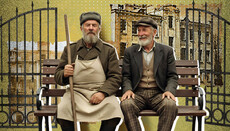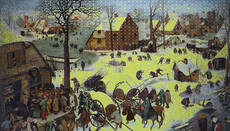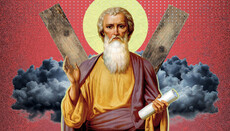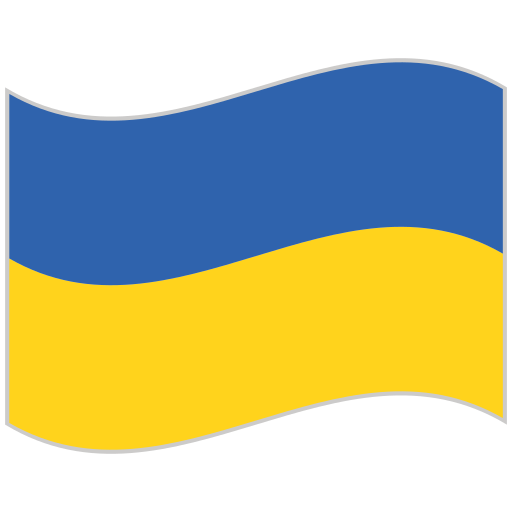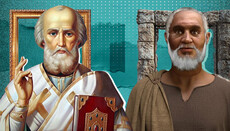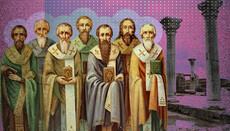VII Ecumenical Council. Part 2. The triumph of icon veneration
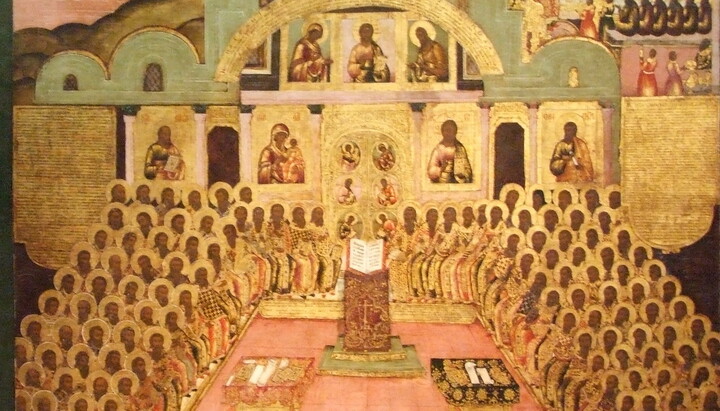
We continue our narrative on iconoclasm, icon veneration, and the historical events of that era.
Emperor Leo IV the Khazar
After the death of the iconoclast Emperor Constantine V Copronymus in 775, a struggle for the throne inevitably began. There were many contenders. Constantine Copronymus had been married three times and had children from his first and third wives. His first wife was Irene, the daughter of the Khazar khagan, who gave birth to the future Emperor Leo the Khazar in 750. In 770, Leo married a very wise and beautiful native of Athens, also named Irene. She played a significant role in the empire’s development, was canonised as the restorer of icon veneration, and became the first woman in Byzantine history to rule independently in her own name.
In 771, Leo and Irene had a son, Constantine, the future emperor. However, his accession to the throne was preceded by a struggle against another dynastic clan – the children of Constantine Copronymus from his third wife, the eldest of whom was Nikephoros. Once these two rival parties were formed, the religious aspect of the conflict also became clear.
The party of Leo the Khazar, Irene, and Constantine took up the banner of icon veneration, meaning they aligned themselves politically with the iconophiles, who, despite bloody persecutions, were still numerous in the empire.
Moreover, as a result of these persecutions, their moral authority had grown, and there were far more sympathisers than their opponents had supposed.
In contrast, Nikephoros and his brothers rallied under the banner of iconoclasm, finding support among those opposed to icons – primarily soldiers and military commanders of the imperial army. It can be assumed that political loyalties were the driving force behind these divisions, rather than theological conviction. Few questioned where the true faith lay – with the iconophiles or the iconoclasts. For example, the army supported the persecutors of icons mainly because Emperor Constantine Copronymus was a successful military leader and commanded respect among the troops rather than out of any deep conviction that icon veneration was doctrinally incorrect.
Anyway, the next emperor was Leo IV Khazar. But, firstly, he could be called a supporter of icon veneration very conditionally. Much more consistent in this regard was his wife Irene.
Before her marriage to the future emperor Leo, however, Irene had to to take an oath to Constantine Copronymus that she would not venerate icons. Moreover, both Leo and everyone else understood that his position on the throne was highly unstable, that his opponents were powerful, and that he could be overthrown at any moment. For this reason, Leo initially refused to crown his son Constantine, who was only five years old at the time. He feared that if a conspiracy arose against him, his son Constantine – an obvious heir to the throne – would also be killed.
The wise Irene gave her husband two pieces of advice. First: to gain the people's favour by reducing taxes and distributing monetary gifts. Second: to discreetly rehabilitate the iconophiles without formally changing the iconoclastic laws.
These measures proved effective. Leo IV earned the respect of the citizens, and monks and bishops who venerated icons began returning from exile. Soon, he agreed to crown his son, which was carried out at Easter in 776. On the one hand, this raised the authority of Irene as the mother of the crowned Constantine, but on the other hand, strengthened the intrigues of the opposing party. A conspiracy was formed to depose Leo and to put Nikephoros as emperor. The plot was uncovered, and Nikephoros, along with his main supporters, was exiled to Chersonesus. However, Leo became fearful and started making concessions to the iconoclast party. One such concession was his demand, following the death of the iconoclast Patriarch Nikephoros of Constantinople in 780, that the new patriarch, Paul, took a written oath not to venerate icons. Paul, reluctantly, complied.
Additionally, the iconoclast party began planting suspicions in Leo’s mind that his wife, Irene, was plotting against him. These suggestions took hold, and Irene fell out of favour. When icons were discovered in her chambers, she was removed from court. Six high-ranking officials from her circle were dismissed from their posts and forcibly tonsured as monks. It is remarkable how monasticism, an institution devoted entirely to seeking God, was exploited by those in power for their own selfish purposes, even in an Orthodox empire.
It is unclear what would have become of Irene and her son Constantine, or how far their disgrace would have gone, but in the autumn of 780, Leo IV died suddenly. According to one account, he was eager to try on the jewelled crown of Emperor Heraclius and ordered it to be retrieved from the crypt. However, traces of corpse poison from Heraclius’ remains had seeped into the inside of the crown, and as the historian Theophanes writes, Leo’s head "turned horribly black. Wracked with violent inflammation, he expelled his soul, paying the price for his sacrilege". Another version suggests that Irene poisoned him.
This is a later version, with no historical evidence beyond the fact that Irene had a motive. Regardless, after her husband’s death, Irene was proclaimed regent for her young son, Emperor Constantine VI.
Irene and the preparations for the VII Ecumenical Council
This elevation of Irene and the party of iconoclasts did not go unanswered by their opponents. Another attempt was made to overthrow her and place Nikephoros on the throne. The conspiracy was uncovered, the plotters were exiled, and Nikephoros and his brothers were not only forcibly tonsured as monks but were also ordained as priests and compelled to perform a public service at the Hagia Sophia. Irene hoped that by doing so, the newly made clerics would lose any claim to the throne in the eyes of the people. She was wrong: Nikephoros tried as many as five times to seize the imperial throne.
Before long, Irene arranged the betrothal of her son, the 13-year-old Constantine VI, to the 8-year-old Rotrude, a daughter of the Western ruler Charlemagne. This was part of a broader policy of reconciliation with the West, which also had implications for religious affairs. As previously mentioned, Rome had condemned iconoclasm as a heresy and had excommunicated all iconoclasts, including the Patriarch of Constantinople. Now, this rapprochement with the West provided yet another argument in favour of restoring icon veneration.
In 784, Patriarch Paul of Constantinople, tormented by guilt over his oath against icon veneration, abdicated and withdrew to a monastery to atone for his sins. When Irene made a half-hearted attempt to restore him to the patriarchal throne, he replied: "Oh, if only I had never ascended to the Throne of Constantinople! For the Church of God was abused, torn away from the other Churches, and anathematised by them."
Patriarch Paul proclaimed the truth of icon veneration, repented of his oath, and called for a council to restore the veneration of icons. Shortly thereafter, he passed away.
From that point on, the question of restoring icon veneration became widely debated both among the people and within the ruling circles. However, the iconoclast party remained very strong. After Paul's death, Irene appointed her secretary, the nobleman Tarasios, as the new patriarch. Addressing the assembly that had elected him, Tarasios made a lengthy speech, in which he made the restoration of icon veneration and the holding of a new Ecumenical Council a condition of his patriarchate.
"If the emperors, as defenders of Orthodoxy, heed my just request to convene an Ecumenical Council, then I too shall yield, obey their will, and accept your choice. But if not, I consider it impossible to do so, lest I fall under anathema and be condemned on the day of the Righteous Judge of all, when neither emperors, nor priests, nor rulers, nor the crowds of people will be able to save me," declared the future Saint Tarasios.
To objections that an "Ecumenical" council had already taken place in 754 and had rejected icon veneration, Tarasios responded that this council had not truly been ecumenical and that the bishops present had been pressured by the authorities. The assembly agreed to his conditions, and within a short time, Tarasios was rapidly ordained through all the clerical ranks and was consecrated as patriarch on Christmas Day in 784.
Upon his appointment, Tarasios followed tradition by sending a synodicon to all the patriarchs, including Pope Hadrian in Rome, in which he professed his faith. In this letter, he affirmed his commitment to icon veneration and invited all to attend the upcoming Ecumenical Council. A special delegation was sent to Rome with an invitation from both the patriarch and the imperial rulers. Pope Hadrian's response was somewhat ambiguous.
First, the Pope welcomed the intention of the new Patriarch of Constantinople, along with Emperor Constantine and Empress Irene, to restore icon veneration.
Second, he reproached Tarasios for having been elevated directly from a secular position to the patriarchate. In the Pope’s eyes, this was barely excusable because of Tarasios’s intention to reinstate icon veneration.
Third, Hadrian expressed, at length and with great insistence, the primacy of the Roman Church over all others. He asserted that the Lord Jesus Christ had established the Apostle Peter as the prince of all apostles and that Peter had passed this supremacy to the Roman pontiffs. Pope Hadrian even placed the authority of the Bishop of Rome above that of the Ecumenical Councils themselves, writing: "The Roman Church held primacy over all the churches of the world, and it was Her prerogative to convene the councils."
In asserting his primacy, Hadrian also firmly opposed the now customary practice of referring to the Patriarch of Constantinople as "Ecumenical".
"We do not know whether this title of 'Ecumenical' was used out of ignorance or as a result of schism or heresy. In any case, we earnestly request Your Imperial Majesty to ensure that the title 'Universalis' is not used in his writings, as it contradicts the decrees of the holy canons and the rulings of the holy fathers. For if anyone calls himself 'Ecumenical', placing himself above the most exalted Holy Roman Church, which is the head of all God's Churches, then clearly, he proclaims himself an opponent of the holy councils and a heretic," the Pope wrote.
In Constantinople, these papal claims to primacy were diplomatically ignored.
The Ecumenical Council convened by the emperors in 786 was not attended by the Pope himself, but he sent his legates, having previously arranged for them to occupy the most prominent seats at the Council.
However, this attempt to hold the Council ended in failure. Iconoclast bishops, supported by the Constantinopolitan garrison, staged a loud demonstration against its opening, which nearly escalated into an armed revolt and the overthrow of the imperial rulers. Patriarch Tarasios and the supporters of icon veneration were openly threatened with death. Empress Irene chose to yield and ordered the bishops to disperse. The iconoclasts rejoiced, shouting, "Long live the Seventh Ecumenical Council!", referring to the iconoclast Сouncil of 754.
Their celebration was short-lived. Irene outmaneuvered the military. First, the Constantinopolitan garrison was sent to Asia Minor, and some time later, the veteran iconoclast soldiers were retired with generous severance pay. In their place, new troops loyal to Irene were recruited. In this way, the empress completely replaced the Constantinopolitan garrison, making it possible to convene a true Ecumenical Council.
VII Ecumenical Council and its decrees
The Council was opened on 24 September 787 in Nicaea. It was truly ecumenical, as, in addition to Byzantine bishops, it was attended by the Pope’s legates and representatives of the Eastern patriarchates. Notably, the Council’s membership included not only bishops but also 131 monks, all of whom signed the Council's decrees and had the right to vote. This can be seen as a kind gesture towards the monastic community, which had suffered greatly during the previous period of iconoclasm.
There was no debate at the Council regarding the truth or falsehood of icon veneration, as the vast majority of its members recognised that iconoclasm had come to an end and that icon veneration would be restored. Instead, the discussion began with the question of how to receive repentant iconoclasts and in what clerical rank they should be reinstated. Some, including Patriarch Tarasios, leaned towards a more lenient approach towards those who repented, while others, primarily monks, demanded strict measures and penalties. Ultimately, Patriarch Tarasios’s position prevailed.
The repentant iconoclasts were divided into three categories.
The first category consisted of those who, although formally opposed to icon veneration, had not taken any hostile actions against its supporters and had not actively promoted iconoclasm. They acknowledged their errors, repented, were forgiven, and retained their episcopal sees and clerical ranks.
The second category included, primarily, those bishops who had allied with the army the previous year to disrupt the Ecumenical Council and had previously actively opposed icon veneration. Their words of repentance were met with some scepticism, but they too were forgiven. The main debate concerned whether they should be reinstated in their clerical rank. The more zealous members argued against it, while the moderates, led by Patriarch Tarasios, advocated for their reinstatement. Canonical rules and letters from Church Fathers such as Cyril of Alexandria, Athanasius the Great, and Basil the Great were read aloud on the subject. Strong arguments were presented on both sides, but ultimately, it was decided to receive all repentant bishops in their existing rank and allow them to retain their sees.
The third category was represented by a single iconoclast bishop, Gregory, Metropolitan of Neocaesarea. He was an old and committed iconoclast who had participated in the Iconoclast Council of 754. It appears that the unanimous decision of the Fathers at the 787 Council to restore icon veneration influenced his position, as he too repented and requested to be received back into the clergy. After lengthy discussions and debates, he was also forgiven and reinstated.
At this point, it is important to address the question of reinstating those who had received ordination from heretics excommunicated from the Church, as this was precisely what occurred at the Seventh Ecumenical Council.
Today, the Ecumenical Patriarchate insists that it follows Church tradition when recognising Serhiy Dumenko and other “bishops” of the OCU as canonical and concelebrating with them without requiring reordination. In defence of its position, the Phanar cites, among other things, the decisions of the Seventh Ecumenical Council. However, it is impossible to ignore the significant differences between these situations.
Firstly, the Ecumenical Patriarchate does not have the authority of an Ecumenical Council, and what an Ecumenical Council decided cannot be done by a single Local Church. Patriarch Bartholomew of Constantinople is repeatedly urged to convene a Pan-Orthodox Council and to resolve the issue of the “episcopacy” of OCU representatives through conciliar deliberation. However, Patriarch Bartholomew persistently refuses to do so.
Secondly, the iconoclasts were reinstated in their clerical ranks only after publicly repenting of their errors. It is highly unlikely that any of them would have been accepted had they continued to persist in their iconoclasm. By contrast, the representatives of the OCU refuse to offer any form of repentance and insist on their own legitimacy. These circumstances not only fail to support Constantinople’s position but, on the contrary, demonstrate the impossibility of receiving OCU representatives into communion in their current ranks without these two essential conditions: repentance and a conciliar decision.
Having resolved the issue of reinstating the repentant iconoclasts, the Council moved on to the question of what constitutes true icon veneration and in what forms it should be expressed, bearing in mind the words of Holy Scripture: “Worship the Lord your God, and serve Him only” (Matthew 4:10).
The final decree (horos) of the Council states:
“We…define with all certitude and accuracy that just as the figure of the precious and life-giving Cross, so also the venerable and holy images, as well in, painting and mosaic as of other fit materials, should be set forth in the holy churches of God, and on the sacred vessels, and on the vestments, and on hangings and in pictures both in houses and by the wayside, to wit, the figure of our Lord God and Saviour Jesus Christ, of our spotless Lady, the Mother of God, of the honourable Angels, of all Saints and of all pious people. For by so much more frequently as they are seen in artistic representation, by so much more readily are men lifted up to the memory of their prototypes, and to a longing after them; and to these should be given due salutation and honourable reverence, not indeed that true worship of faith which pertains alone to the divine nature; but to these, as to the figure of the precious and life-giving Cross and to the Book of the Gospels and to the other holy objects, incense and lights may be offered according to ancient pious custom. For the honour which is paid to the image passes on to that which the image represents, and he who reveres the image reveres in it the subject represented.”
The Council also adopted 22 canons, many of which reiterated the decrees adopted at the previous Ecumenical Councils against various abuses, indicating that these issues had not yet been eradicated. Several canons addressed the evil of simony, such as Canon 19:
“The abomination of filthy lucre has made such inroads among the rulers of the churches, that certain of those who call themselves religious men and women, forgetting the commandments of the Lord have been altogether led astray, and for the sake of money have received those presenting themselves for the sacerdotal order and the monastic life…”
A special mention should be made of Canon 13, as it is relevant to the current ecclesiastical situation. Today, there is an ongoing process of expelling monastic and church communities from their monasteries and churches. The same occurred during the era of iconoclasm, when many church buildings were repurposed for housing or other secular needs. Canon 13 commands that such buildings, regardless of who eventually took possession of them, must be returned to the Church. Otherwise, the guilty parties “...and assigned their place where the worm dieth not and the fire is not quenched”. All modern detractors of the Church would do well to remember this.
It might seem that the Seventh Ecumenical Council restored icon veneration, that the truth had triumphed, and that all would now be well. However, as has often been the case in history, after the Ecumenical Council, heresy did not simply disappear but instead revived with renewed force. This will be discussed in the concluding part of the publications on the Seventh Ecumenical Council.
